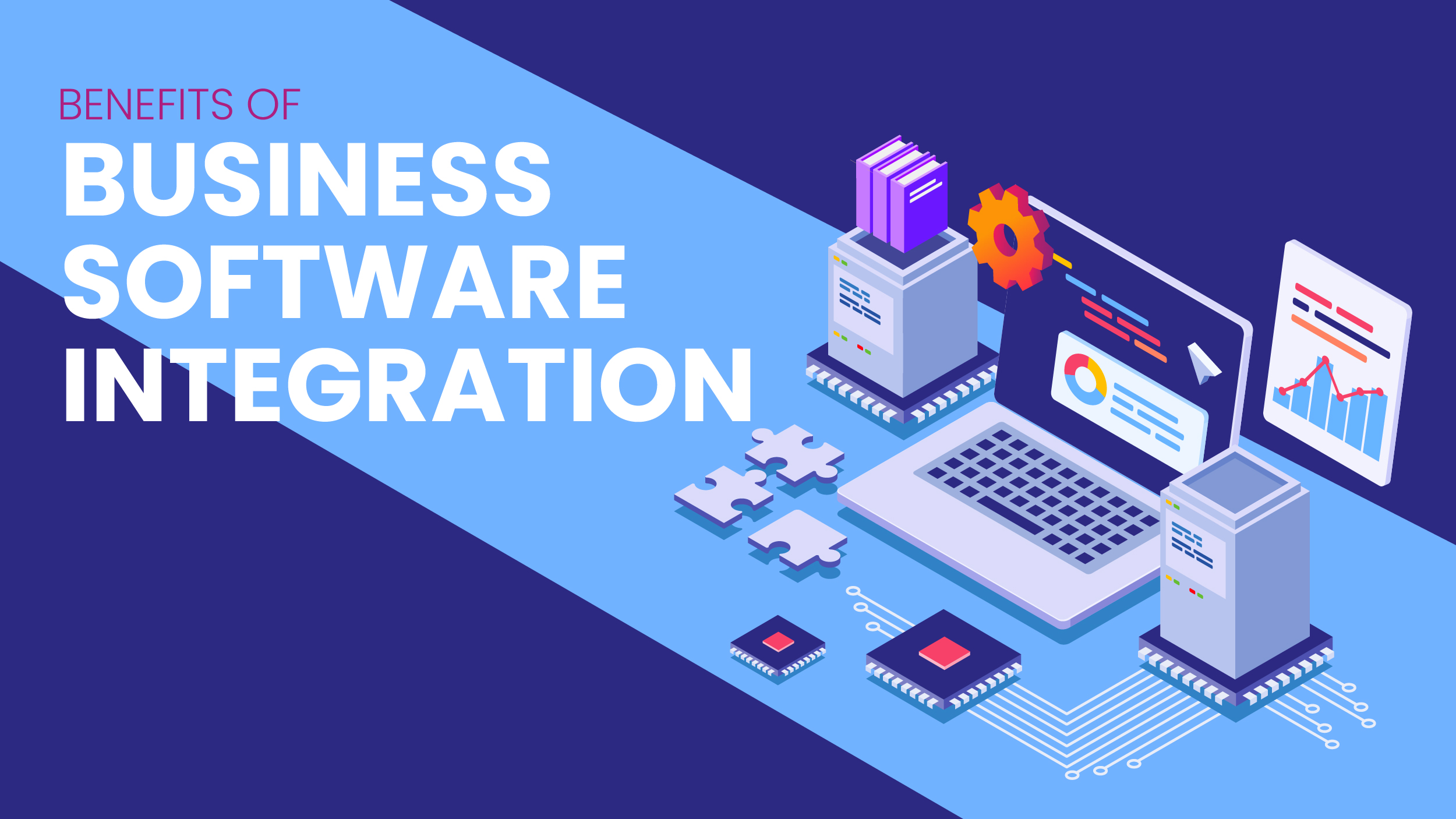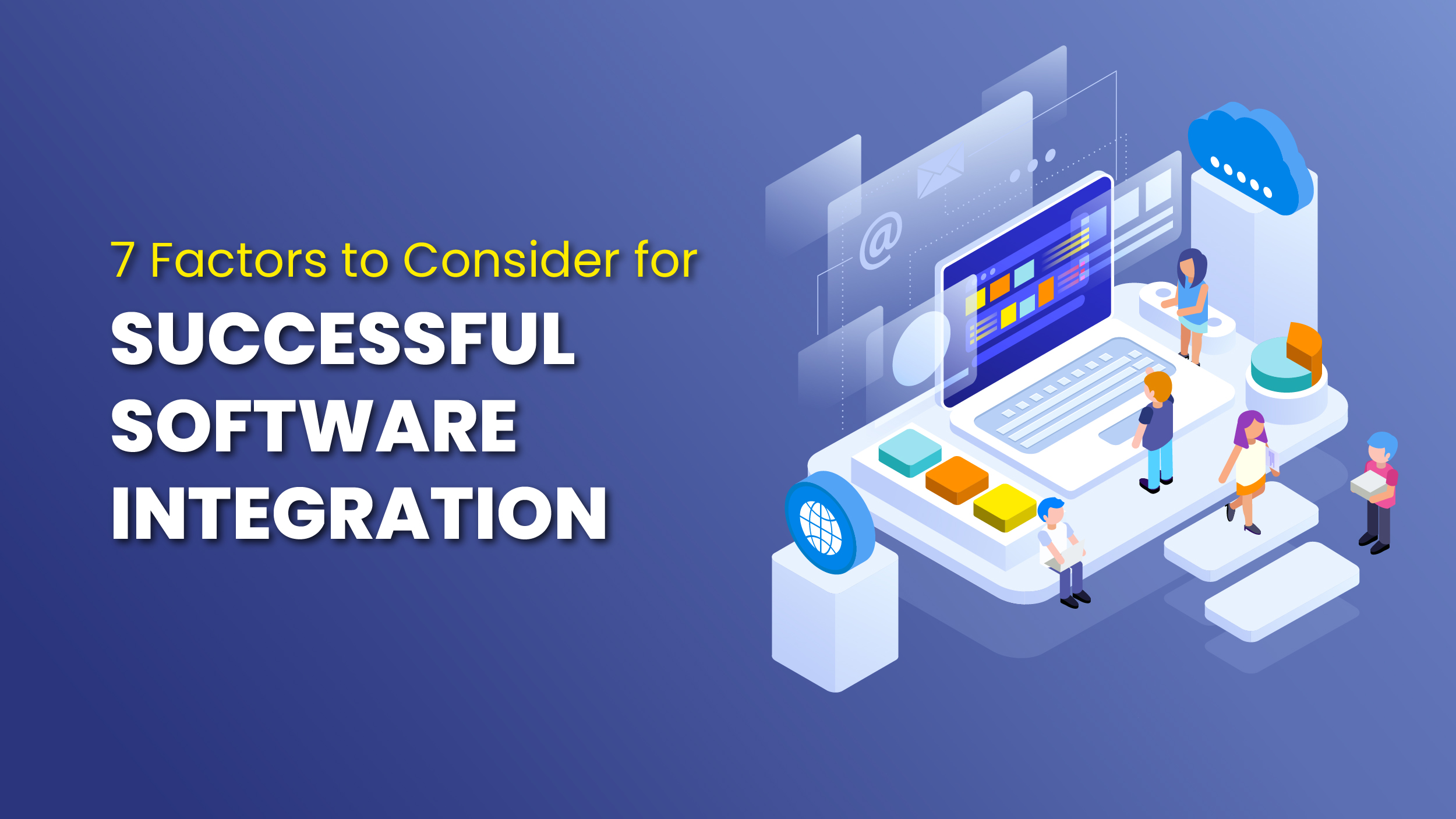Are you ready to take your business to the next level by harnessing the power of software integrations? In today’s fast-paced corporate world, the ability to seamlessly connect different software systems can make all the difference in streamlining processes, improving efficiency, and driving growth.
Whether you’re a small business owner or an aspiring entrepreneur, understanding the ins and outs of business software integration is essential for optimizing your operations. This is exactly what we will be explaining in this blog, let’s get started.
What is Business Software Integration?
The integration of business software involves the amalgamation of diverse software systems and applications within a business, facilitating the smooth sharing of data, communication, and collaboration. This process entails linking and harmonizing various software tools, databases, and platforms to streamline business operations, enhance efficiency, and boost productivity.
With software integration, organizations can connect various applications, allowing them to communicate and share data seamlessly. This integration enables businesses to optimize their operations, enhance collaboration, and gain a competitive edge in the market.
Integration involves combining different software solutions, such as customer relationship management (CRM), enterprise resource planning (ERP), project management, and others, into a cohesive ecosystem. This interconnectedness eliminates data silos, reduces manual tasks, and enables real-time data sharing across departments or systems.
Examples of business software integration include syncing HRIS (Human Resources Information System) and ITSM (IT Service Management) tools, integrating legacy systems with modern applications, B2B integration, project management integration, CMS (Content Management System) integration with CRM (Customer Relationship Management) software, inventory management integration, and application integration. These integrations enable seamless data sharing, improved collaboration, streamlined workflows, and enhanced efficiency across various functional areas of a business.
Benefits of Business Software Integration

Business software integration offers several benefits that can enhance efficiency and productivity within an organization. Here are some key advantages:
- Simplified decision-making: Integration of software systems provides a complete view of data, eliminating the need to switch between different applications to access relevant information.
- Increased productivity: Integrating applications that use the same data sources improves operational efficiency by eliminating duplicate data entry and streamlining workflows.
- Improved data accuracy: Integration reduces the risk of errors caused by manual data entry and ensures that information is consistent across different systems.
- Enhanced collaboration: Integrated software solutions enable better communication and collaboration among teams, facilitating seamless sharing of information and fostering teamwork.
- Better visibility: It allows for better information management, providing visibility into various aspects of the business and enabling leaders and managers to make informed decisions.
- Streamlined processes: By automating workflows and eliminating manual tasks, integration optimizes business processes, reducing the time and effort required for routine operations.
- Cost savings: Integration can lead to cost savings by eliminating the need for multiple software licenses, reducing manual labor, and improving overall operational efficiency.
7 Factors to Consider for Successful Software Integration
 Implementing software integrations can be a complex and daunting task for businesses. However, with careful planning and consideration, you can ensure a smooth and successful integration process. Here are some factors to keep in mind for successful software integration:
Implementing software integrations can be a complex and daunting task for businesses. However, with careful planning and consideration, you can ensure a smooth and successful integration process. Here are some factors to keep in mind for successful software integration:
1. Define Integration Goals and Objectives
Before you begin the integration process, clearly define your goals and objectives. Identify the specific business processes or workflows that need to be integrated and determine how the integration will benefit your organization. This will help you stay focused during the implementation and ensure that the integration aligns with your overall business strategy.
2. Select the Right Integration Software
Choosing the right integration software is crucial for a successful implementation. Consider factors such as compatibility with your existing systems, scalability, security features, and support for future upgrades. Look for a solution that offers a user-friendly interface and robust capabilities to handle your integration requirements effectively.
3. Define Data Ownership and Governance
Data ownership and governance should be clearly defined and agreed upon before the integration process begins. Determine who will be responsible for maintaining and updating the integrated data, as well as the protocols for data access, security, and privacy. Establishing clear guidelines will help ensure data consistency and prevent conflicts down the line.
4. Assess Technical Compatibility
Evaluating the technical compatibility between the systems to be integrated is key for business software integration. Consider factors such as data formats, protocols, APIs, and transport languages. Ensure that the systems can communicate effectively and that any necessary connectors or adapters are available for seamless data transfer.
5. Plan for Data Mapping and Transformation
Data mapping and transformation are crucial steps in any integration process. Understand the data structures and formats of both the source and target systems, and create a mapping plan that defines how the data will be transformed and synchronized between the two systems. This will ensure accurate and meaningful data exchange during the integration.
6. Test and Validate the Integration
Thorough testing is essential to identify and resolve any issues or inconsistencies before going live with the integrated systems. Conduct extensive testing to ensure that data is flowing correctly, transactions are processed accurately, and any custom workflows or business rules are functioning as expected. Validate the integration’s performance and scalability to ensure it meets your business requirements.
7. Provide Training and Support to Users
Invest in comprehensive training and provide ongoing support to users who will be interacting with the integrated systems. Empower them with the knowledge and skills needed to navigate the new workflows and tools. Offering technical assistance and troubleshooting guidance will help users adapt to the changes and maximize the benefits of the integrated software.
Remember, successful software integration requires careful planning, stakeholder alignment, and continuous monitoring. By considering these factors and following best practices, you can streamline your business processes, enhance data accuracy, and improve overall efficiency through successful software integration.
Closing Thoughts
Business software integration is a crucial strategy for organizations to optimize operations and drive growth. It provides a holistic view of data, streamlines processes, and enhances collaboration. Benefits include simplified decision-making, increased productivity, improved data accuracy, and better customer service. However, successful integration requires careful planning, implementation, and maintenance to address compatibility issues and ensure data security.


Comments are closed.